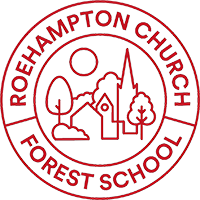Spelling, Punctuation & Grammar
Spellings are taught according to the rules and words contained in Appendix 1 of the English National
Curriculum. Teachers use these spellings to support their teaching and to provide activities that link to these weekly spellings. Children are given words to learn each week and are given a spelling test the following week. The spellings the children are given are differentiated to ensure all pupils, including SEND, have opportunities to be successful and progress.
Grammar and punctuation knowledge and skills are taught through English lessons as well as discrete spelling, punctuation and grammar lessons once per week. Teachers plan to teach the required skills through the genres of writing that they are teaching, linking it to the genre to connect it with the intended writing outcomes. Teachers also teach particular grammar and punctuation skills as stand-alone lessons to embed and develop pupils’ understanding or to consolidate skills. Individual or small group speech and language interventions often focus on the development of grammatical structures and the expansion of vocabulary for pupils who need further support in this area.
Grammar
Year 1
By the end of Year 1, children will be able to combine sentences, joining words and clauses. They will be able to sequence ideas in narratives and will be able to punctuate sentences using full stops, question marks and exclamation marks. Children will be able to use plural noun suffixes (-s or –es) and suffixes that can be added to verbs (-ed, -ing and –er). They will be able to recognise that the prefix un- changes the meaning of verbs and adjectives. They will be able to use capital letters and the personal pronoun I.
Year 2
By the end of Year 2, children will be able to use suffixes to form nouns (-ness and -er), adjectives (-ful and –less) and adverbs (-ly). They will be able to use subordinating and coordinating conjunctions. They will be able to use expanded noun phrases to add description. Children will be able to explain how the grammatical patterns in a sentence indicate its function as a statement, question, exclamation or command. They will be able to use the present tense and past tense through their writing and use the progressive form of verbs in the present and past tense. Children will be able to use capital letters, full stops, question marks and commas in their writing and use apostrophes to mark singular possession.
Year 3
By the end of Year 3, children will be able to use further prefixes to form nouns (super-, anti- and auto-). They will be able to use a and an in the correct place, knowing which goes before a consonant and vowel. They will recognise word families based on common words, showing understanding of how words are related in form and meaning. They will be able to use conjunctions to express time, place and cause, as well as adverbs and prepositions. They will recognise main and subordinate clauses. Children will use paragraphs in their writing to group related material. They will use headings and sub-headings to aid presentation. Children will use present perfect forms of verbs instead of the simple past. They will also begin to use inverted commas to punctuate direct speech.
Year 4
By the end of year 4, pupils will be able to recognise the grammatical difference between plural and possessive –s. They will be able to use Standard English forms for verb inflections instead of local spoken terms. They will use noun phrases expanded by the addition of modifying adjectives. Children will also use fronted adverbials. They will use paragraphs to organise ideas around a theme. They will also use appropriate nouns and pronouns to aid cohesion. Children will use inverted commas and other punctuation to indicate direct speech. They will use apostrophes to mark plural possession and use commas after fronted adverbials. Children will recognise determiners in sentences and be able to give examples.
Year 5
By the end of Year 5, children will be able to convert nouns or adjectives into verbs using suffixes (-ate, -ise and -ify). They will be able to use verb prefixes (dis-, de-, mis-, over-, and re-). Children will be able to use relative clauses and indicate degrees of possibility using adverbs or modal verbs. They will use devices to build cohesion within a paragraph and will link paragraphs using adverbials of time, place and number. They will be able to punctuate sentences using brackets, dashes or commas to indicate parenthesis and use commas to clarify meaning or avoid ambiguity.
Year 6
By the end of Year 6, children will be able to tell the difference between vocabulary used for informal speech and formal speech. They will be able to identify how words are related by meaning as synonyms and antonyms. They will use the passive form to affect the presentation of information in a sentence. Children will use subjunctive forms to differentiate between formal speech and informal speech. They will link ideas across paragraphs using a wider range of cohesive devices: repetition of a word or phrase, grammatical connections, and ellipses. They will use a range of layout devices (headings, sub-headings, columns, bullet points or tables). Children will be able to punctuate sentences using semi-colons, colons and dashes to mark the boundary between independent clauses. They will use colons to introduce a list and use semi-colons within a list and will use hyphens to avoid ambiguity.
Children will be able to recognise the subject and object within a sentence and identify active and passive voice.
